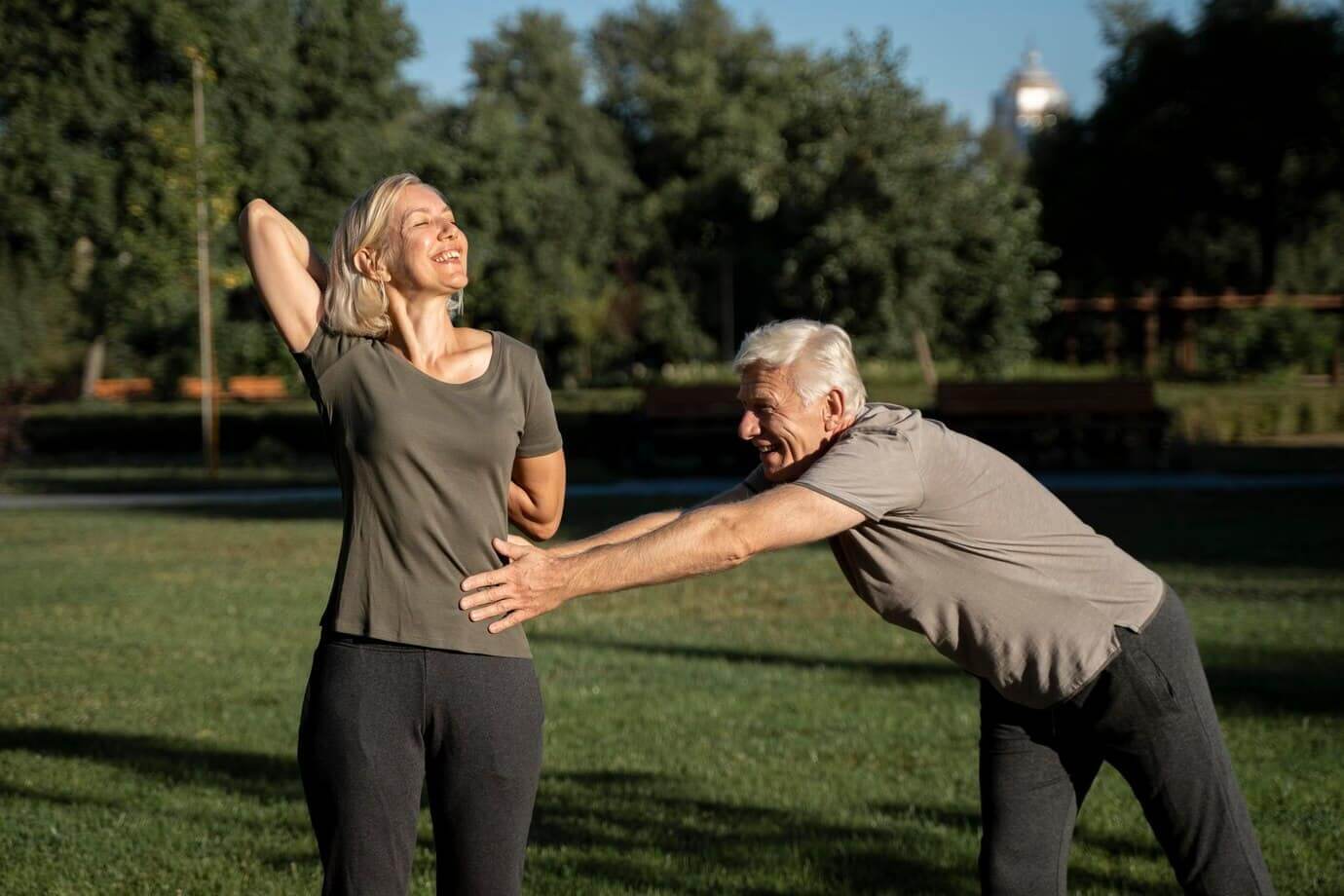- Thriving Guide
- Posts
- Safe and Effective Workouts for Seniors Top 10 Picks
Safe and Effective Workouts for Seniors Top 10 Picks
Gentle yet powerful moves to improve strength, flexibility, and overall quality of life after 65.

Exercise is one of the best ways to stay healthy and independent as you age. For adults over 65, a mix of cardiovascular training, strength exercises, and stretching can enhance muscle tone, improve flexibility, and boost overall energy levels. Even a few minutes a day can make a big difference in mobility, balance, and confidence.
Below are 10 simple and safe exercises that can be done at home or in a fitness class.
1. Seated Hamstring Stretch
Tight hamstrings can limit mobility.
How to do it:
Sit on the edge of a sturdy chair.
Extend one leg forward, resting your heel on the floor.
Lean forward slightly at the hips until you feel a stretch along the back of your thigh.
Hold for 10 seconds, repeat three times, then switch legs.
2. Calf Stretches
Keep your calves flexible to support better walking.
How to do it:
Stand facing a wall with your hands flat at shoulder height.
Step one foot back, keeping the heel down.
Bend your front knee and lean forward until you feel a stretch.
Hold 10 seconds, repeat three times on each leg.
For a deeper stretch, bend the back knee slightly.
3. Knee-to-Chest
This stretch improves lower back flexibility.
How to do it:
Lie on your back with knees bent.
Bring one knee toward your chest, holding behind the knee if necessary.
Hold for up to 30 seconds, then switch.
Repeat three times per leg.
4. Pendulums
A gentle shoulder warm-up.
How to do it:
Lean forward slightly with one hand resting on a counter for support.
Let the opposite arm hang down.
Swing your arm gently forward and back, side to side, and in small circles.
Do 10 reps in each direction, then switch arms.
5. Sit-to-Stand
This functional move strengthens the legs and hips.
How to do it:
Sit on a chair with your feet flat on the floor.
Lean forward slightly and push through your heels to stand.
Slowly lower back into the chair.
Aim for 10–15 reps.
6. Knee Extensions
Build strength in your quads to aid walking and stair climbing.
How to do it:
Sit with your back straight.
Extend one leg forward until it’s parallel to the floor, hold 2–3 seconds, then lower.
Perform 10 reps per leg, working up to three sets.
7. Leg Curls
Targets hamstrings for better balance and stability.
How to do it:
Stand holding the back of a chair.
Bend one knee to bring your heel toward your buttocks.
Hold for 2–3 seconds, then lower.
Perform 10 reps per leg, working up to three sets.
8. Calf Raises
Strengthens lower legs for walking and stair climbing.
How to do it:
Stand with your hands on a wall or chair.
Rise up onto your toes, hold 1–2 seconds, then lower.
Aim for three sets of 10 reps.
Try single-leg raises for more challenge.
9. Biceps Curls
Improves arm strength for lifting and carrying.
How to do it:
Hold a light dumbbell or water bottle in each hand.
With palms facing forward, bend your elbows to bring weights toward your chest.
Lower slowly.
Do 10 reps per arm, up to three sets.
10. Front Raises
Helps with daily activities like reaching and lifting.
How to do it:
Hold a small weight with arms by your sides.
Keeping elbows straight, lift the weight to shoulder height.
Lower slowly.
Repeat 10 times, up to three sets.
A Simple Weekly Plan
The U.S. Department of Health and Human Services recommends:
150 minutes of moderate aerobic activity per week, such as brisk walking.
Two strength sessions per week focusing on major muscle groups.
A 30-minute session might include:
10 minutes of brisk walking.
Sit-to-stands, leg curls, and calf raises (10 reps each, 3 sets).
Biceps curls and front raises (10 reps each, 3 sets).
10 minutes of walking or light stretching to cool down.
Exercise Safety
Warm up for at least five minutes before starting.
Consult a physical therapist or doctor if you have a chronic condition, balance problems, or recent injuries.
Consider water-based exercises if you experience joint pain.
Regular exercise can boost mood, maintain independence, and improve quality of life. Start small, be consistent, and celebrate progress.
Share this article or subscribe to our newsletter for more health tips.